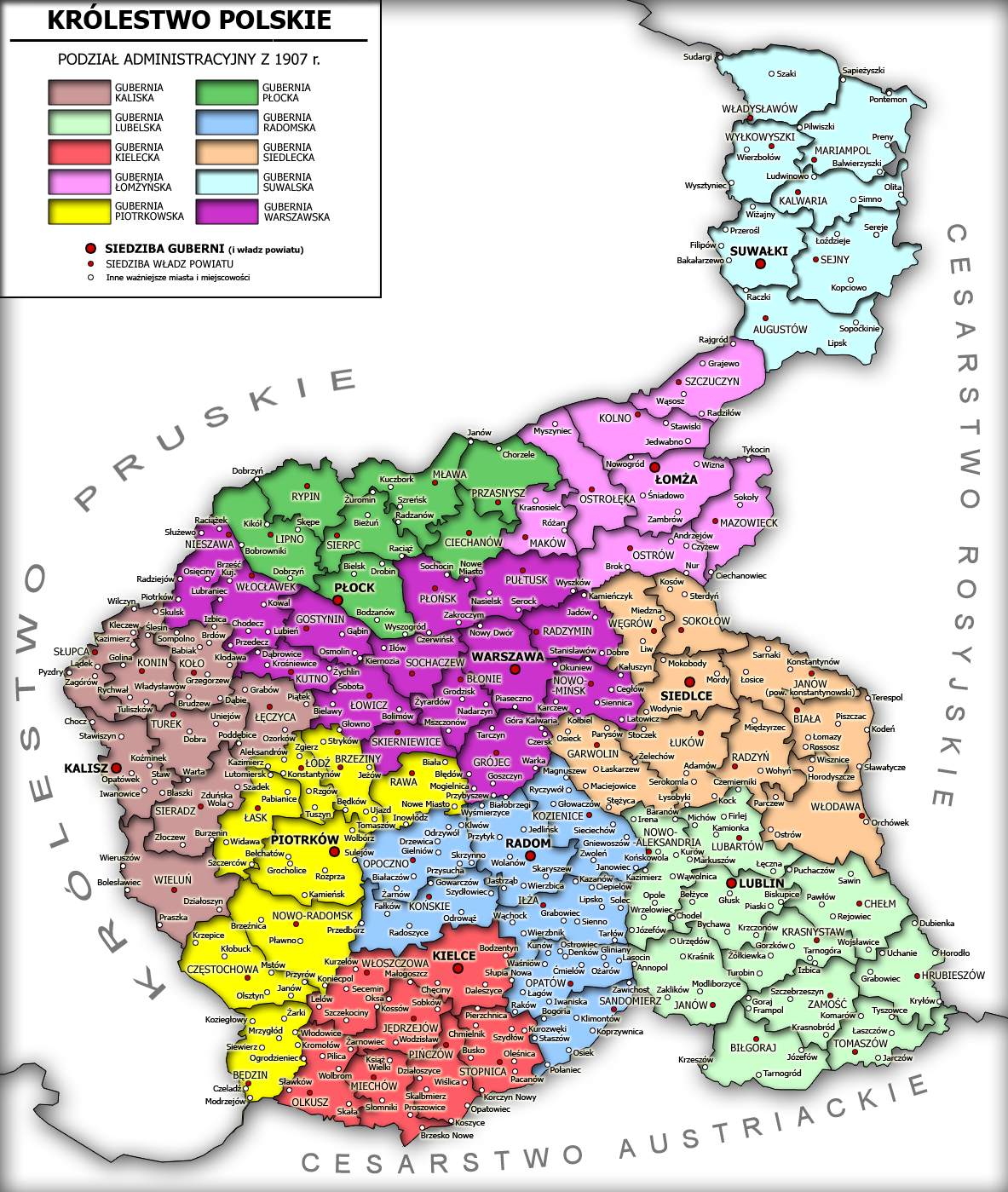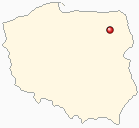 |
| Map of Poland, 1907, Szczuczyn is near Lomza |
 |
| Szczuczyn is the red dot on this map of Poland |
Szczuczyn, Poland was the home of the Monkovskis, the family of my husbands maternal grandparents. It is an old market town, first mentioned in the fifteenth century. In 1900, the population was about 3000, and 58% were Jews, most of them were traders and craftsmen. An independent Jewish community was established in 1820 with a synagogue and Bet Midrash (House of Study). The Jewish community of Szczcuzyn was destroyed in the Holocaust. Many of the former residents have written memoirs of their town and its vibrant culture.
Most of the Monkovski family left Szczcuzyn at the beginning of the twentieth century, emigrating to the United States and Israel, those who remained perished in the Holocaust.
I am including information about life in Szczuczyn from the memoirs of the former residents, written after World War II, since the Monkovski's who lived there are no longer with us.
"Not far from the then German border lies the shtetl, Shtutsin [Szczuczyn].... Jews there were engaged mainly in commerce and trade. All businesses were Jewish. Only a few were of Christian proprietorship. Two days in a week were market days: Tuesdays and Fridays. The peasants came to these fairs with their products...and sold them to the Jews. With the money they received, the peasants would buy from the Jews: clothes, drink and the like. Life went on in this manner until Hitler came to power. Anti-Semitism grew stronger and commerce was taken out of Jewish hands....Before anti-Semitism infested the shtetl, Jews had felt like their own masters....Everything had been open to the Jews: City hall, government institutions and all other offices." (Yeshiah Skubelski, from The Destruction of the Community of Szczuczyn, Tel Aviv, Israel, 1954)
 |
| Market Days in a Polish Shtetl |
Itzhak Wertman writes in his memoir, From the Inferno, Back to Life, about his home in Szczuczyn in the 1920's. "Economically, we weren't very rich, but also not poor. We lived in a rented house next to the shop. It had two rooms and a kitchen, and the bathroom was in the yard. The living conditions in those days demanded a lot of work: we used to draw the bath water...from a well in the yard. A Gentile woman brought our drinking water from the river.... We heated the house with a porcelain stove, which stood between the two rooms, and a lit a fire in it using wood and peat (and later by coal). The was a stove for cooking in the kitchen that we also lit with wood and peat.
As children, we used to play different games: we made balls from various rags and played with them or with a hoop that we rolled on the ground with a wire. In the winter, when we studied at night, we used to make lanterns for ourselves. (From the Inferno Back to Life pp. 3-19)
Wertman describes how his family celebrated the Sabbath: "We always received the Sabbath with special preparations: my mother cleaned the house for the Sabbath, made challot [Sabbath bread] and cakes every Thursday night, and on Friday took them to the bakery to bake them. She also used to bring the cholent [a meat stew] that she made to the bakery. On Sabbath morning, like all the other Jews in the city, we took the cholent home for our Sabbath meal.
Shortly before the entrance of the Sabbath, the Synagogue's dayan walked between the shops in the city and announced that it was time to close the shops for the approaching Sabbath. All the city's Jews--men, women and children-gathered in the synagogue for the Sabbath prayer. [After the services, the family returned home for a festive meal] After the meal, every Friday night and also on the Sabbath, we wore our best clothes and went for a stroll in the city's main street." (pp. 3-19)
 |
| Scczuzyn, Poland |
 |
| Chiam Monkovski's family, dressed in their best clothes, ready to celebrate the Sabbath in Szczuczyn. Chiam Monkovski was my husband's great Uncle. |
No comments:
Post a Comment